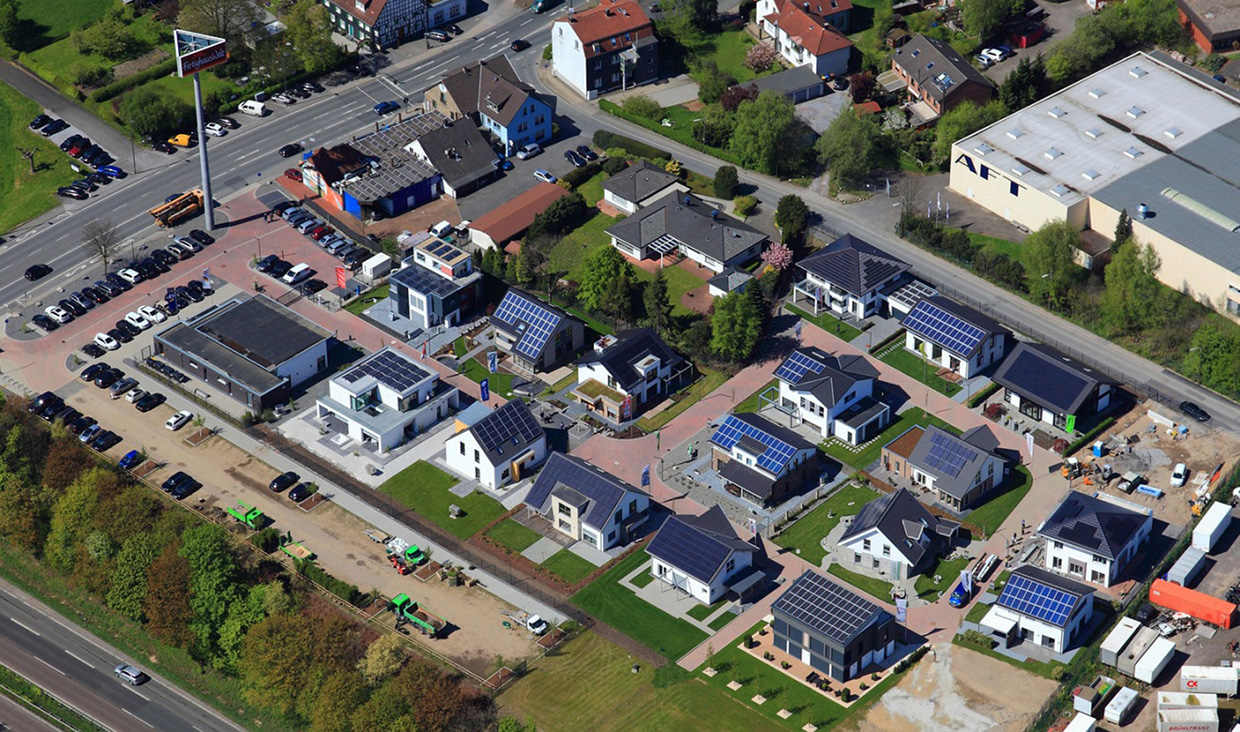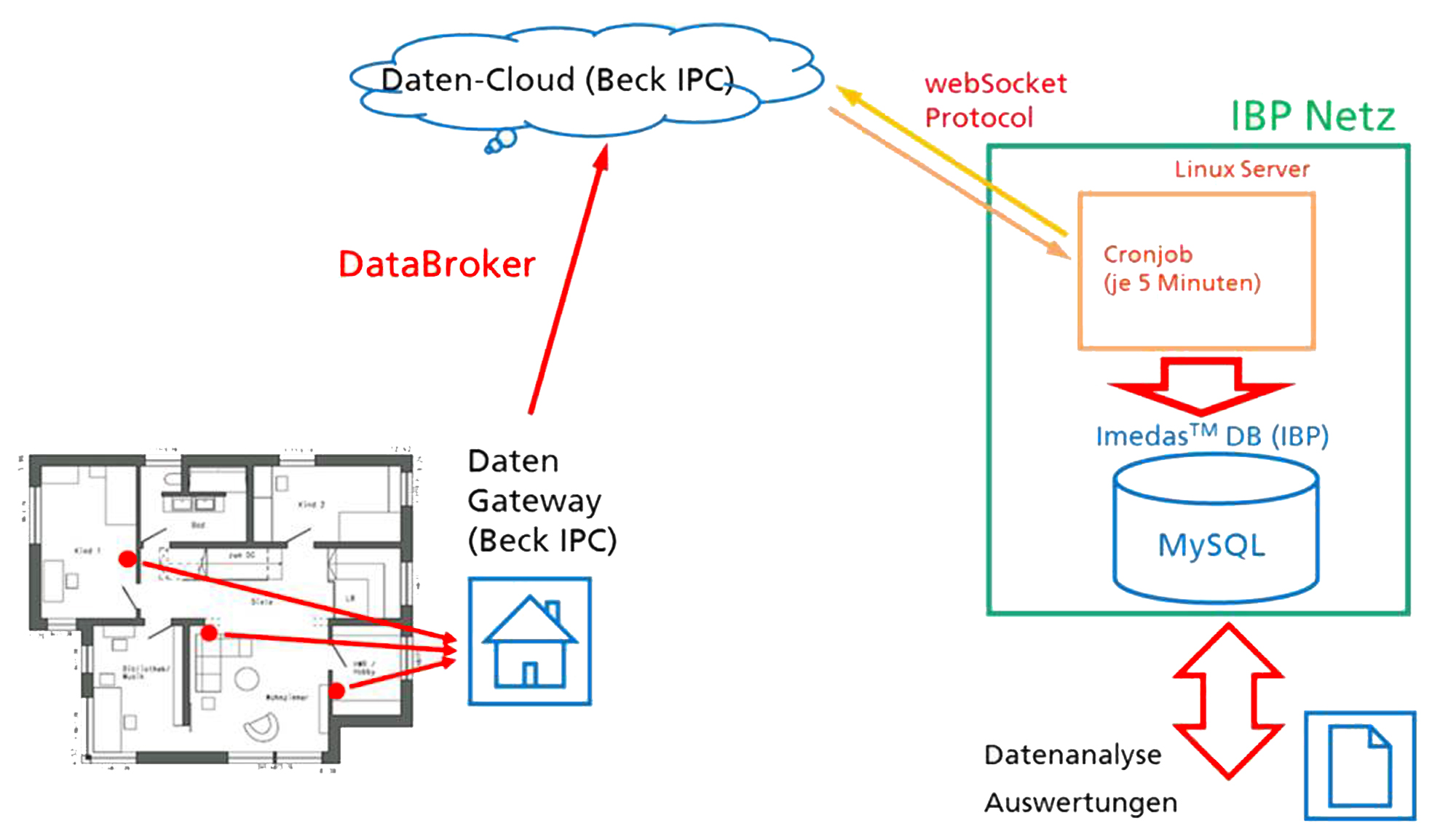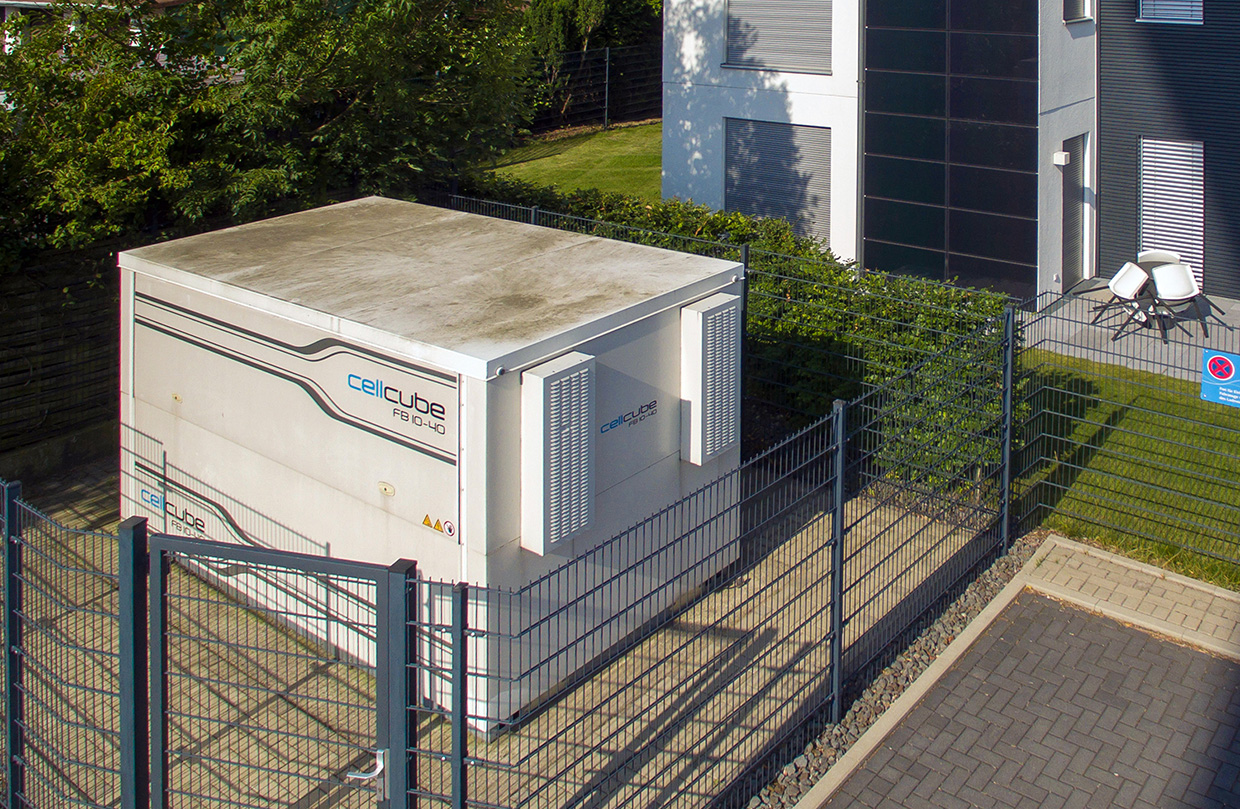Practical comparison of different storage strategies for efficiency-houses plus in exemplary residential estates



The aim of the project was the practical and theoretical investigation of central storage facilities ('estate electricity storage') for surplus regenerative (PV) energy. These investigations include aspects of economic efficiency and energy performance. In a two-year monitoring project being performed at the Living Lab platform of the Federal Association of German Prefabricated Construction (Bundesverband Deutscher Fertigbau e.V.) at the Wuppertal exhibition of prefab homes, various storage concepts were directly compared in terms of their different degrees of self-use and rates of self-sufficiency.
In a first step, the existing measurement technology was enhanced to ensure that all the required measurement data can be provided during the project term. The measured data recorded for each single building were transferred to a data cloud which is accessed by the Fraunhofer IBP data acquisition system -> IMEDASTM (Only German), which subsequently stores all data in a database. The collected datasets provide the basis for analyzing the energy flows inside the buildings or within the residential estate. In the first year of the 2-year measuring campaign, the estate was operated without any storage unit; here, the shift of electricity among the buildings has been analyzed. In the second year of measurement, a central electricity storage unit was integrated into the estate’s electricity supply network. Subsequently, both years were compared with regard to electricity self-use and the rate of self-sufficiency.
In parallel, a numerical assessment has examined and compared different variants of electricity supply, ranging from traditional, decentralized solutions to innovative, centralized concepts for city districts.
Every month, the current consumption data of the individual buildings has been presented on the Efficiency House Plus-website of the research initiative 'Zukunft Bau' ('Future Construction'):
-> https://www.zukunftbau.de/programm/effizienzhaus-plus/modellvorhaben (Only German)
The project received funding from The German Federal Ministry of the Interior, Building and Community (BMI), represented by the German Federal Institute for Research on Building, Urban Affairs and Spatial Development (BBSR).